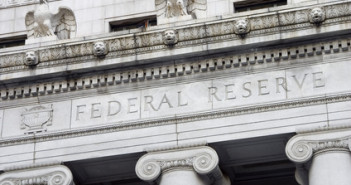Ben Bernanke and his colleagues are unlikely to make an outstanding statement for now. QE3 is always an option that the market is buzzing about, but it seems that the Fed will leave the scene for ECB this time.
Apart from taking no action at all after the recent decision to extend “Operation Twist”, the Fed might extend another one of its lightweight measures or pretend it has more bullets and hint about more actions.
Background
The US economy has been growing at a slow speed of 1.5% in Q2 2012, according to the first release. During Q2 and also at the beginning of Q3, US economic figures have been mediocre, not enough to trigger more action nor good enough to cheer the world.
The small job gains are the perfect example: they are sufficient to keep the unemployment rate from rising but don’t push it down. The housing sector is a bit better, with house prices rising a bit. Manufacturing is doing a bit worse, as seen in the ISM Manufacturing PMI, the Philly Fed index and others.
The services sector, which is the biggest one, is in the slow growth zone and so are prices: inflation is not a threat, but neither is deflation at the moment. Fear of deflation triggered QE2.
Apart from fighting deflation, the rational for more bond buying is lowering long term interest rates. These are already extremely low. So QE can’t help the economy too much. Bernanke already acknowledged that these programs have “diminishing returns”.
So what the Fed tell the world on it’s summer meeting? Here are 4 scenarios
- Pretend – Hints about QE3 in September: The Fed could encourage markets by hinting about future action. “Leaving all options open” and “readiness to act”, aren’t new. Connecting such a move to deflation or a deterioration in Europe could add some meat to the hints. The Fed doesn’t really have tools to boost the US economy, but by hinting it can do something, the Fed can stir the markets. This scenario has high probability, the dollar will likely slide. Such hints do not mean that QE3 is certain.
- Extend – A longer low rate pledge: The Fed introduced the pledge to keep interest rates low back in the summer of 2011. The conditional pledge was set to mid 2013 and was extended in January to late 2014. The Fed could now extend it to 2015. This form of verbal stimulus has good chances according to some analysts, but it will likely result in a stronger dollar. Similar to the extension of Operation Twist, this will be yet another substitute to QE3 that many wish for.
- Nothing at all: This has happened many times in the past: leaving all measures unchanged and only slightly changing the wording about the economy. This scenario has medium chances after the recent move to extend Operation Twist and will likely result in a slightly stronger dollar.
- QE3: The option of expanding the balance sheet cannot be ruled out, but has low chances due to all the reasons mentioned above. In this case, Bernanke will steal the show from Draghi and the dollar will fall sharply.
Apart from a surprising announcement of QE3, all the other options will trigger limited moves in the markets and will leave the scene to Mario Draghi that vowed to do “everything to save the euro, and believe me, it will matter”.
Here’s more on what Draghi could do (including full QE) and why Draghi could disappoint.
